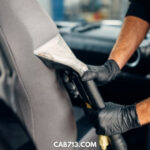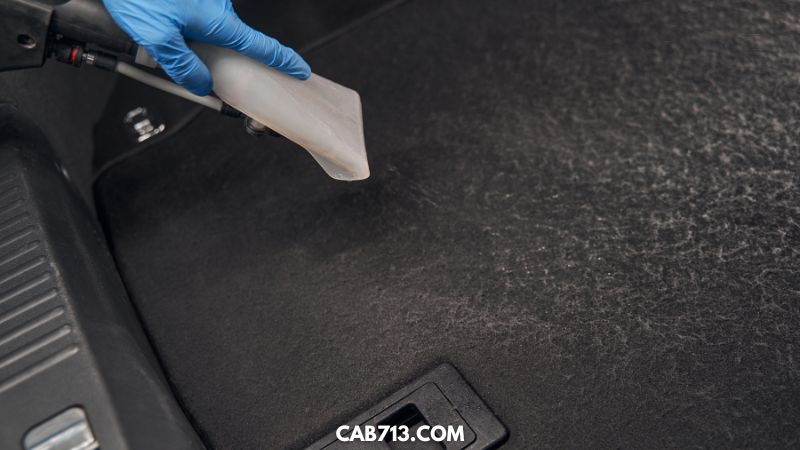Introduction
This happens to me all the time. I’ve spent hours washing and waxing my car only to notice that there are still subtle scratches and swirl marks everywhere. Here’s a close up of my 993 front clip with lot’s of swirl marks. Side note – I sold this car and will always regret that decision!!!

I can live with swirl marks, but it’s definitely possible to remove them entirely or at least partially… But how?
When it comes to car care, there are a variety of different products on the market that can be used to clean and polish your vehicle. Two of the most popular products are rubbing compound and polishing compound. While both of these products can be used to achieve a high level of shine, there are some key differences between rubbing compound vs polishing compound that you should be aware of.
One option is to use a rubbing compound. Rubbing compounds are designed to remove surface imperfections like scratches and swirl marks. They contain abrasive particles that work to smooth out the surface of your paint.
Polishing compounds are another option. Polishing compounds also contain abrasive particles, but they’re less aggressive than rubbing compounds. Polishing compounds are designed to remove light imperfections and to give your paint a high-gloss finish.
If you’re not sure which product to use, ask a professional detailer or your local car care specialist. They can help you choose the right product for your needs.
When choosing between rubbing compound and polishing compound, it is important to consider the type of finish that you want to achieve. If you are looking for a high level of shine, then rubbing compound is the better option. However, if you are looking for a more natural finish, then polishing compound is the better choice.
It is also important to consider the amount of time and effort that you are willing to put into the project. Rubbing compound is more labor intensive than polishing compound and will require more time to achieve the desired results. Polishing compound is less labor intensive and can be completed in a shorter amount of time.
When it comes to price, rubbing compound is typically more expensive than polishing compound. This is because it is more labor intensive and requires more materials. Polishing compound is less expensive because it requires fewer materials and can be completed in a shorter amount of time.
Tools Needed for Rubbing a Car
(yes, that’s a real term..)
In order to rub a car properly, you will need a few tools:
- First, you will need a power drill with a buffing pad attachment.
- Second, you will need a polishing compound.
- Third, you will need a rubbing compound.
- Lastly, you will need a clean rag.
Now that you have all of the necessary tools, you are ready to begin rubbing your car.
Instructions for Rubbing a Car
- Begin by washing your car. This will help to remove any dirt or debris that could potentially scratch the paint while you are buffing.
- Next, apply the polishing compound to the buffing pad on your power drill.
- Rub the polishing compound into the paint in a circular motion. Be sure to cover the entire surface of the car.
- Once you have polished the entire car, rinse it off with water.
- Next, apply the rubbing compound to the buffing pad on your drill.
- Rub the rubbing compound into the paint in a circular motion. Be sure to cover the entire surface of the car.
- Once you have rubbed the entire car, rinse it off with water.
- Finally, apply a coat of wax to the car. This will help to protect the paint and make it shine!
Now that you know how to polish a car, you can keep your vehicle looking its best. Be sure to wash and wax it regularly to maintain its Shine!
What are needed in Polishing a Car
In order to polish a car, you will need the following supplies:
- A bucket
- Soap
- Water
- A sponge or washcloth
- A soft cloth
- A drill with a buffing pad attachment
- Rubbing compound (also called polishing compound)
- Wax
- A chamois (a soft, absorbent cloth)
Tips for Polishing a Car
- Wash your car before you start polishing it. This will remove any dirt or debris that could scratch the paint.
- Be sure to use a mild soap when washing your car. Harsh detergents can damage the paint.
- Wax your car after you polish it. This will help to protect the newly polished surface.
- Buffing pads come in different sizes. Choose one that is appropriate for the size of your drill.
- You may need to apply more than one coat of wax to achieve a high shine.
- If you are polishing a large area, such as the hood of a car, work in small sections to avoid fatigue.
- Take your time when polishing your car. rushing can lead to mistakes that will mar the surface.
- When you are finished polishing, be sure to clean the buffing pads before storing them.
Common Challenges on Rubbing Compound vs Polishing Compound

One of the most common issues people have when it comes to polishing or rubbing a car is that they don’t know how to do it properly. This can lead to a number of problems, such as streaks or smears on the paint, which can be very difficult to remove. Additionally, if you don’t know how to rub or polish a car properly, you may end up damaging the paint or clearcoat.
If you’re not sure how to polishing or rub a car, there are a few things you can do to make sure you do it correctly. First, always use a clean, soft cloth when rubbing or polishing your car. Additionally, be sure to use a gentle, circular motion when rubbing or polishing the car’s surface. If you’re still not sure how to properly rub or polish a car, you may want to consult with a professional detailing company. They can help you achieve the perfect shine on your car’s paint, without damaging it in the process.
Conclusion
When choosing between rubbing compound vs polishing compound, you should consider the amount of time and effort you are willing to put into the project, as well as the price. Rubbing compound is more labor intensive but will produce better results. Polishing compound is less expensive and can be completed in a shorter amount of time. Consider your budget and the level of results you desire when making your decision.

I’ve been a working drummer for 35+ years now and have lots of experience (good and bad) with lots of different gear. I’ll be writing how-to articles, comparison guides, FAQs, etc.., on topics ranging from acoustic drums, hardware, cymbals and accessories. I plan to post some fun video as well! I hope you’ll find this website useful in your quest for drumming knowledge:)






